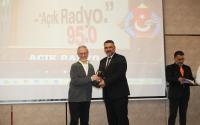19 April 2006Andrew Osborn
The fallout from Chernobyl, the world's worst nuclear accident, will be 10 times more deadly than previously thought and will cause almost 100,000 people to die from cancer in coming years, Greenpeace says.
Twenty years after Chernobyl's fourth reactor exploded, sending a radiation-lined cloud into the atmosphere, the green, anti-nuclear campaign group alleged that the human consequences of the disaster have been woefully and deliberately underestimated.
It accused the pro-nuclear lobby of systematically trying to play down the scale of the tragedy for cynical public relations purposes. As the 20th anniversary of the accident looms, the truth about how many people have fallen ill or died as a result of the radiation leak has become the subject of a fierce debate between those who support nuclear power and those who don't. It is not an idle academic debate - establishing how serious Chernobyl really was has taken on cardinal political importance as the UK and continental Europe consider commissioning a new generation of nuclear reactors to compensate for dwindling oil and gas stocks.
With its new report Greenpeace became the latest interest group to enter the fray. It cited demographic data which showed that some 200,000 people appear to have already died in Ukraine, Belarus and Russia, the area most heavily contaminated, as a direct result of the 1986 Soviet-era accident. The total number of directly attributable cancer cases in that region was set to soar to 270,000, it added, of which 93,000 would be fatal.
Greenpeace said its findings proved that nuclear energy was too dangerous and should be shelved. "Each one of these statistics has a face," it noted grimly. The accident occurred when an unnecessary experiment to test the reactor's performance went badly wrong and it exploded. Greenpeace said it was a lesson the world should not forget.
"The [emissions] from this one reactor exceeded the radioactive contamination by the nuclear weapons used at Hiroshima and Nagasaki by one hundred times. It has become clear that one nuclear reactor can contaminate half the Earth."
The group's findings sharply contradicted those in a report compiled by various United Nations agencies (including the International Atomic Energy Agency) and the World Bank released in September. It claimed the disaster would ultimately claim the lives of between 4,000 and 9,000 people and said that, although serious, its impact had been vastly exaggerated.
It said that fewer than 50 deaths could be directly attributable to the accident so far, that people who contract thyroid cancer have a 99 per cent survival rate, and that many of those who have died in the contaminated area (which has a population of about five million) were killed by lifestyle diseases caused by drinking and smoking.
Controversially, it spoke of "persistent myths and misperceptions about the threat of radiation". Dr Michael Repacholi, the coordinator of the WHO's radiation and environmental health unit, said: "The health effects of the accident were potentially horrific, but when you add them up using validated conclusions from good science, the public health effects were not nearly as substantial as had at first been feared."
Vladimir Chuprov of Greenpeace Russia said yesterday that the pro-nuclear lobby had hijacked the UN's report to "whitewash" the truth about Chernobyl. That, he said, was why Greenpeace needed to issue its own report compiled by 52 scientists.
Establishing how serious Chernobyl was has been made harder by the fact that the 18-mile exclusion zone around the reactor in modern-day Ukraine has become a vibrant unplanned nature reserve, prompting some to say that the accident does not seem to have been as bad as first thought.






